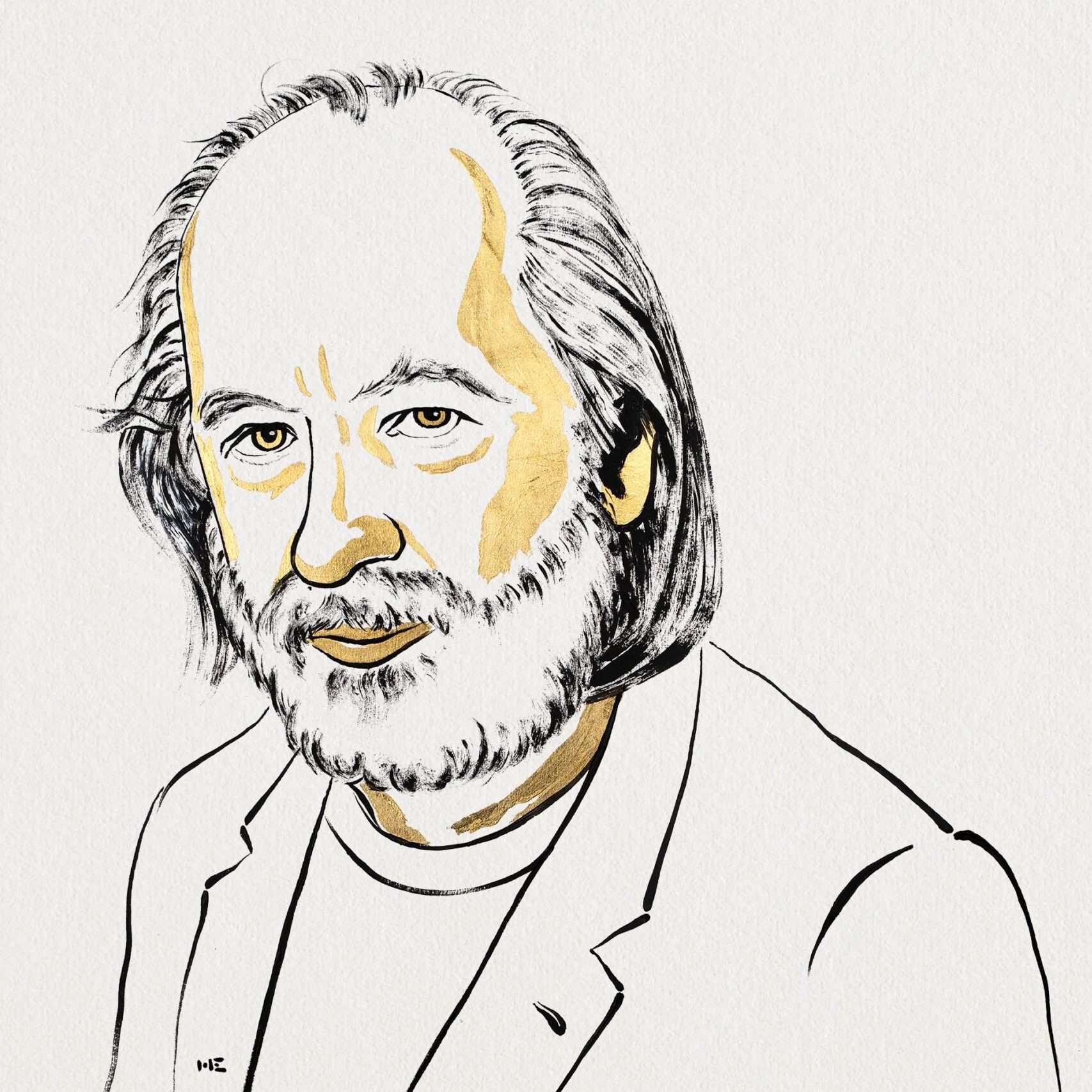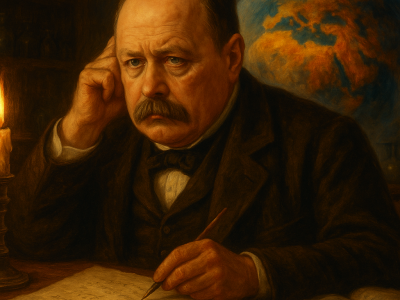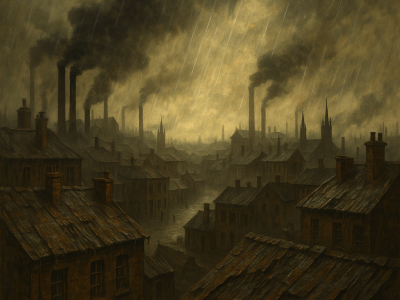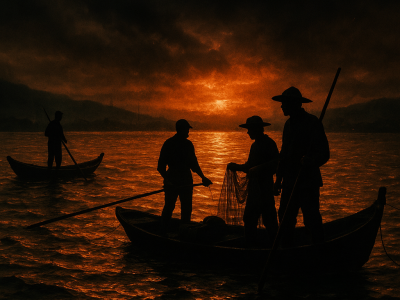The 2025 Nobel Prize in Literature honours Hungary’s master of the apocalypse, whose works turn chaos into art and despair into vision. Through darkness, he reaffirms the enduring power of creation.
In 1954, in the quiet Hungarian town of Gyula near the Romanian border, a child was born who would one day redefine how the world reads catastrophe. László Krasznahorkai grew up in a region marked by the tremors of post-war Europe, a landscape where the weight of history pressed heavily on ordinary lives.
From these beginnings emerged one of modern literature’s most enigmatic voices. His works, dense with meaning and alive with foreboding, capture the sense that civilisation itself teeters on the edge of collapse. Yet within this collapse, he finds grace, laughter, and redemption.
This year, the Swedish Academy awarded him the Nobel Prize in Literature “for his compelling and visionary oeuvre that, in the midst of apocalyptic terror, reaffirms the power of art.”
Krasznahorkai’s fiction is not for the hurried reader. His sentences spiral and stretch endlessly, creating a rhythm that mirrors the anxious pulse of the human mind. They draw readers into worlds that seem to decay as one watches, only to reveal, at their core, an indestructible spark of beauty.
The apocalypse of ordinary life
Krasznahorkai’s breakthrough came in 1985 with Sátántangó (Satantango). Set in a desolate collective farm in rural Hungary, the novel unfolds like a fever dream of a society unravelling. The villagers wait in the mud for a miracle that never arrives. Then, two men, Irimiás and Petrina return from the dead, bringing with them promises of salvation. What follows is both grotesque and tragic, a dance of deception and longing that mirrors the slow collapse of a world drained of faith.
The critic Susan Sontag later called Krasznahorkai the “master of the apocalypse”, and with reason. In The Melancholy of Resistance (1989), he intensified this vision. The book opens with the arrival of a ghostly travelling circus in a small Hungarian town, whose main attraction is the corpse of a giant whale. Around it, chaos festers. Crowds grow restless, violence erupts, and order gives way to absurdity. The novel is both a metaphor for the failure of reason and an exploration of how terror feeds on passivity.
In these early works, Krasznahorkai captured the mood of late twentieth-century Central Europe, an atmosphere of exhaustion, spiritual hunger, and the longing for transcendence amid ruin. His characters stumble through darkness, searching for signs that something sacred still remains.
Collaboration and cinematic vision
Krasznahorkai’s partnership with the filmmaker Béla Tarr brought his bleak and beautiful worlds to the screen. Together they transformed Satantango into a seven-hour black-and-white film in 1994 that has since become a classic of world cinema. Tarr’s slow, hypnotic camera mirrored the rhythm of Krasznahorkai’s prose, turning decay into art and time into a tangible substance.
Later, The Melancholy of Resistance became Werckmeister Harmonies (2000), a haunting film about order, chaos, and the frailty of human systems. The two artists shared a vision of beauty emerging from desolation. Their collaborations helped introduce Krasznahorkai’s darkly luminous imagination to audiences far beyond Hungary.
A quest beyond Hungary
In Háború és háború (War and War, 1999), Krasznahorkai looked beyond the Hungarian landscape and towards the world’s centre. The protagonist, a humble archivist named Korin, discovers an ancient manuscript and travels to New York to publish it online before taking his own life. Through this strange and obsessive journey, the novel explores humanity’s desire for permanence in a transient world.
By the time of this book, Krasznahorkai had perfected his signature style: sentences that flow without pause, carrying readers in a single breath through spirals of thought and despair. His prose, both lyrical and relentless, reflects a mind searching for meaning amid entropy.
If War and War represents the quest for transcendence abroad, Báró Wenckheim hazatér (Baron Wenckheim’s Homecoming, 2016) marks a return home. The story follows a ruined aristocrat who comes back to Hungary after years in exile, hoping to reunite with his childhood love. Instead, he finds a country paralysed by vanity and corruption. The novel plays with literary tradition, Dostoyevsky’s fool, Cervantes’s wanderer, and Bernhard’s cynic, while weaving them into a tragicomic portrait of national decay.
These novels, taken together, form a panoramic meditation on exile, return, and the futility of redemption. They are the works that cemented Krasznahorkai’s reputation as a great epic writer in the Central European tradition stretching from Kafka to Thomas Bernhard.
Bach and the flames of modern Europe
Krasznahorkai’s most recent major novel, Herscht 07769: A Novel (2024), revisits the apocalyptic theme in a contemporary German setting. Set in a small town in Thuringia, it portrays a community unravelling through violence, arson, and social unrest, all under the ghostly shadow of Johann Sebastian Bach’s legacy.
The protagonist, Herscht, is a naïve and pure-hearted figure, a modern incarnation of Dostoyevsky’s holy fool. When he discovers that the very people he trusted are responsible for the chaos around him, his innocence becomes both his curse and his redemption.
Through Herscht 07769, Krasznahorkai examines how the sacred and the destructive coexist in modern life. The novel has been described as a “great contemporary German novel” for its precision in depicting social disorder and the fragile ideals that hold civilisation together.
It is also the culmination of his decades-long exploration of terror and beauty—two forces that, in his vision, cannot exist apart.
Turning to the East
While his apocalyptic sagas earned him fame, another strand runs through Krasznahorkai’s body of work: a turn towards Eastern thought and aesthetics. After years of travel in China and Japan, his writing became more contemplative, shifting from chaos to quiet revelation.
His 2003 novel A Mountain to the North, a Lake to the South, Paths to the West, a River to the East unfolds near Kyoto. It tells the story of a monk’s search for a hidden temple, blending Japanese myth with European introspection. Every line in the book is infused with patience, silence, and reverence for the natural world.
This meditative current reaches its height in Seiobo There Below (2008), a masterpiece comprising seventeen interconnected stories arranged in a Fibonacci sequence. Each story examines the act of artistic creation—from a Renaissance painter’s struggle with an unfinished masterpiece to a Japanese artisan’s devotion to perfection.
In one unforgettable scene, a white heron stands motionless in Kyoto’s Kamo River, waiting for its prey as people pass by, oblivious. The bird becomes a symbol of the artist: still, solitary, and unseen, yet embodying an eternal purpose.
For Krasznahorkai, beauty is not a comfort but a form of resistance against impermanence. Seiobo There Below stands alongside his grand epics as one of the defining achievements of his career.
Madness, imitation and creation
Krasznahorkai’s shorter work Spadework for a Palace (2018) reveals a playful side of his vision. Set in Manhattan, it follows a narrator haunted by the ghosts of Herman Melville and obsessed with the architecture of the city. The story is at once a comic reflection on artistic obsession and a meditation on imitation, madness, and originality.
The narrator’s descent into the “madness of others” reflects the paradox of the artist who must resist influence even while shaped by it. It is a light-hearted yet profound take on themes that run throughout his writing, the loneliness of creation and the impossibility of absolute originality.
The signature of endurance
Krasznahorkai’s prose style defies easy imitation. His sentences are long yet precise, his tone both grand and intimate. Each phrase carries the weight of philosophical inquiry, the rhythm of liturgy, and the claustrophobia of confinement.
His stories often inhabit the margins of history: forgotten towns, failed revolutions, and doomed lives. Yet they are filled with flashes of humour and tenderness. The apocalypse, in his hands, is never total, it leaves room for art, for memory, and for the faint light of understanding.
He once said that writing is a form of endurance, a way of waiting for revelation without ever expecting it. His characters wait endlessly, for miracles, for truth, for beauty, and in doing so, they mirror the reader’s own longing.
That is perhaps why his works resonate so deeply in an age of uncertainty. His worlds may be collapsing, but within that collapse lies a stubborn hope that art can still make sense of the ruins.
Recognition and influence
Over four decades, Krasznahorkai’s influence has extended far beyond literature. His collaboration with Béla Tarr reshaped modern cinema. His reflections on art and beauty have inspired visual artists, composers, and architects. His books have been translated into many languages and honoured with international awards, including the Man Booker International Prize.
The Nobel recognition crowns a lifetime of relentless inquiry into the human condition. In the words of Anders Olsson, chair of the Nobel Committee, Krasznahorkai’s work “reaffirms the power of art in the midst of apocalyptic terror.”
He stands in the line of Central European visionaries who saw madness and order as two faces of the same truth. Yet unlike Kafka’s despair or Bernhard’s fury, Krasznahorkai’s voice carries a quiet compassion. Beneath his desolate landscapes runs an undercurrent of mercy, a belief that the act of creation itself is enough to redeem.
Legacy of a timeless voice
As Europe and the world face their own moments of upheaval, Krasznahorkai’s writing feels prophetic. He warns of decay but also insists on beauty. His novels remind readers that history is not a straight line but a series of spirals, and that art remains one of the few ways to break the cycle.
In Satantango, the villagers dance endlessly in circles, unable to escape their fate. In Seiobo There Below, the artist reaches for perfection only to confront impermanence. In Herscht 07769, faith and delusion coexist within the same fragile heart. Together, these works form a vision of humanity poised between ruin and revelation.
The Nobel Prize affirms not only Krasznahorkai’s genius but also the endurance of literature as a mirror of existence. Through the terror and absurdity of life, he has built cathedrals of language such as vast, echoing, and alive with the promise that even in the darkest times, art remains possible.
Profiles of the laureates
László Krasznahorkai is a great epic writer in the Central European tradition that extends through Kafka to Thomas Bernhard, and is characterised by absurdism and grotesque excess. But there are more strings to his bow, and he also looks to the East in adopting a more contemplative, finely calibrated tone.
Prize Amount: 11 million Swedish kronor (~1.2 millon USD).
References
Royal Swedish Academy of Sciences. (2025). Nobel Prize in Literature 2025. https://www.nobelprize.org/prizes/literature/2025/press-release/
Featured photo credit: Ill. Niklas Elmehed © Nobel Prize Outreach







